Condensing gas boiler: specifics of action, pros and cons + difference from classic models
Sellers of condensation-type heat generators declare that the efficiency of the innovative equipment offered to us exceeds 100%. But you must admit, this is slightly contrary to the law of conservation of energy, familiar to all of us from the school physics course. So what is the mystery?
On the one hand, such statements are a ploy by marketers. However, on the other hand, there is a grain of truth in their assurances of buyers that convince the buyer. We will analyze in detail how the condensing boiler is arranged: the advantages and disadvantages, its specifics of work and design deserve a detailed study.
In order to get a full idea of the condensation type of equipment, we compare it with the classic form of a thermal energy generator. Here are the features of its connection and operation. Reveal the secrets of ultra-high performance.
The content of the article:
Gas condensing boiler
The high efficiency of the condensing gas heat generator is ensured by the presence of an additional heat exchanger in its design. The first heat exchange unit, standard for all heating boilers, transfers the energy of the burned fuel to the heat carrier. And the second also adds to this the heat from exhaust gas recovery.
Condensing boilers operate on "blue fuel":
- main (gas mixture with a predominance of methane);
- gas tank or balloon (a mixture of propane and butane with a predominance of either the first or second component).
It is permissible to use any type of gas. The main thing is that the burner is designed to work with one or another type of fuel.

The condensing heat generator shows the best efficiency when burning methane. The propane-butane mixture here is slightly inferior. Moreover, the greater the proportion of propane, the better.
In this regard, “winter” gas for a gas tank gives a slightly higher efficiency output than a “summer” one, since the propane component in the first case is higher.
Unlike a condensing gas boiler, in the convection part of the thermal energy go into the chimney together with the combustion products. Therefore, the efficiency of classical designs is in the region of 90%. You can raise it higher, but technically too difficult.
Economically, this is not justified. But in condensers, the heat received from burning gas is used more rationally and fully, since the heat generated during processing of steam is accumulated and transferred heating system. Thus, the coolant is additionally heated, which allows to reduce fuel consumption per 1 kW of heat received.
Device and principle of operation
By design, the condensing boiler is in many ways similar to a convection analog with a closed combustion chamber. Only inside it is supplemented by a secondary heat exchanger and a recovery unit.
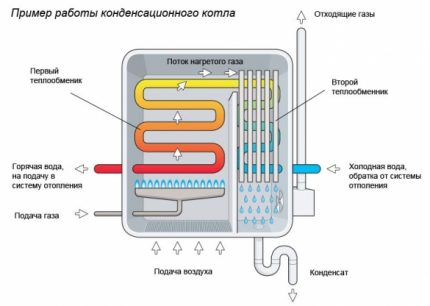
The gas condensing boiler consists of:
- closed combustion chambers with a modulated burner;
- primary heat exchanger No. 1;
- exhaust cooling chambers up to + 56–57 0C (dew point);
- secondary condensation heat exchanger No. 2;
- chimney;
- air supply fan;
- condensate tank and its drainage system.
The equipment in question is almost always equipped with an integrated circulation pump for coolant. The usual option with a natural flow of water through heating pipes is of little use here. If there is no pump in the kit, then it will definitely need to be provided for when preparing the boiler piping project.
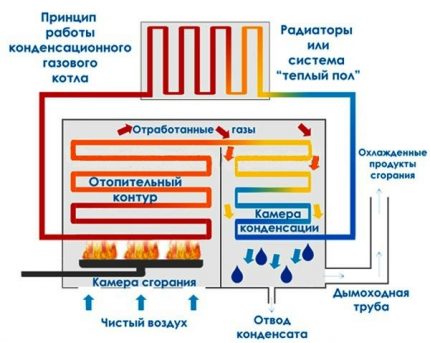
Condenser boilers for sale are single-circuit and bypassas well as floor and wall versions. In this, they have no differences from classical convection models.
The principle of operation of a condensing gas boiler is as follows:
- Heated water receives the main heat in the heat exchanger No. 1 from gas combustion.
- Then the coolant passes through the heating circuit, cools down and enters the secondary heat exchange unit.
- As a result of condensation of the combustion products in heat exchanger No. 2, the cooled water is heated by the recovered heat (saving up to 30% of fuel) and goes back to No. 1 in a new circulation cycle.
To precisely control the temperature of the exhaust gases, condensing boilers are always equipped with a modulating burner with a power stroke of 20 to 100% and an air supply fan.
Nuances of operation: condensate and chimney
In a convection boiler, natural gas combustion products CO2, nitrogen oxides and steam are cooled only to 140–160 0C. If you cool them lower, draft will drop in the chimney, aggressive condensate will begin to form and the burner will go out.
Such a development, all manufacturers classic gas heat generators seek to avoid in order to maximize the safety of work, as well as extend the life of their equipment.
In a condensing boiler, the temperature of the gases in the chimney fluctuates around 40 0C. On the one hand, this reduces the requirements for heat resistance of the material of the chimney pipe, but on the other hand it imposes restrictions on its choice in terms of resistance to the effects of acids.

Heat exchangers in condensing heat generators are made from:
- stainless steel;
- silumin (aluminum with silicon).
Both of these materials have enhanced acid resistance. Cast iron and ordinary steel are not suitable for capacitors at all.
The chimney for the condensing boiler may only be installed in stainless steel or acid-resistant plastic. Brick, iron and other chimneys for such equipment are not suitable.

When a condensing boiler with a capacity of 35–40 kW is operating, about 4–6 liters of condensate are formed. Simplified output is about 0.14-0.15 liters per 1 kW of thermal energy.
In fact, this is a weak acid, which is forbidden to be drained into an autonomous sewer, as it will destroy the bacteria involved in waste processing. Yes, and before dumping into a centralized system, it is recommended that you first dilute with water in a proportion of up to 25: 1. And then you can remove it without fear of destroying the pipe.
If the boiler is installed in a cottage with a septic tank or VOC, then the condensate must first be neutralized. Otherwise, it will kill all the microflora in the autonomous treatment system.
The “neutralizer” is made in the form of a container with marble chips with a total weight of 20–40 kg. When passing through marble, the condensate from the boiler rises in pH. The liquid becomes neutral or low alkaline, already non-hazardous to bacteria in the septic tank and to the material of the sump itself. It is required to change the filler in such a converter once every 4-6 months.
Where is the efficiency above 100%?
When indicating the efficiency of a gas boiler, manufacturers take the indicator of lower heat of gas combustion without taking into account the heat generated during condensation of water vapor as a basis. In a convection heat generator, the latter, together with approximately 10% of the heat energy, is completely consumed in chimney, therefore, it is not taken into account.
However, if you add the condensation secondary heat and the main from the burnt natural gas, then more than 100% efficiency will come out. No fraud, just a little trick in numbers.
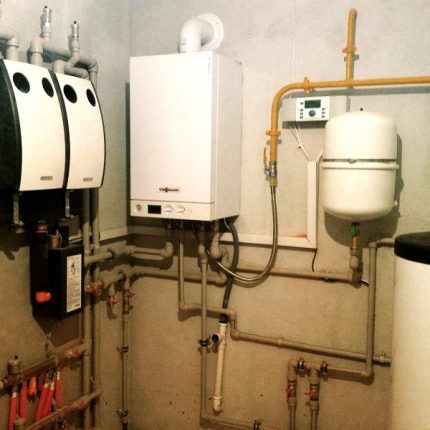
In fact, the “wrong” efficiency above 100% arises from the desire of manufacturers of heat-generating equipment to compare the compared indicators.
It’s just that in a convection device “water vapor” is not considered at all, but it must be taken into account in a condensation one. Hence the small discrepancies with the logic of basic physics taught at school.
Pros and Cons of a Condensation Heater
Among the advantages of a condensing boiler are:
- A reduction of 60–70% in the volume of harmful emissions (most of the carbon dioxide and nitric oxides go into condensate).
- Compared with convection models, savings of up to 30% of gas fuel per generated 1 kW.
- Smaller dimensions of gas-fired heating equipment at the same power.
- Low temperature of combustion products in the chimney (only about 40 0WITH).
- The ability to install a cascade of several boilers.
- Versatility (suitable both for heating radiators and for "warm floors").
- The presence of intelligent automation and the complete autonomy of the gas heat generator without human intervention.
A cascade system of two or three heat generators allows you to install low-power boilers that are less noisy and vibrate during operation than more powerful models.
This simplifies the installation of the entire heating system and reduces the size home boiler. Plus, due to the possibility of more flexible regulation of the heat generation process, the overall efficiency of the use of heat-generating equipment is increased.

Of the minuses of condensing heat generators should be mentioned:
- A high price tag for equipment (1.5–2 times higher than that of similar-power models of the classic convection type).
- Problems with condensate disposal.
- Decreased efficiency when using the boiler in high-temperature heating systems.
- Volatility - Electricity is required for the fan, automation, and circulation pump to operate.
- Prohibition of use with antifreeze.
Despite the significant upfront costs, the condensing boiler is justified from an economic point of view. During operation, he more than returns all money originally spent.
In Russia, such equipment is not yet widespread. The gas boiler with recovery is still too unusual and little studied in our market. But interest in such heat generators is gradually growing.
Conclusions and useful video on the topic
How does a condensing heat generator work:
The device of gas boilers with water vapor recovery:
All the advantages of condensing boilers:
If you carefully understand how and by what principles a gas condensing boiler works, then at first glance the “incorrect” 108–110% efficiency becomes quite understandable and justified by the numbers.
A heat generator with exhaust gas recovery is actually more efficient than the classic design. Its only serious drawback is condensate with high acidity, which must be disposed of somewhere.
Please write comments in the block form below. It is possible that you own information that can replenish the stock of information presented in the article. Ask questions, share your own experience in the selection and operation of condensing type boilers, post a photo on the topic of the article.

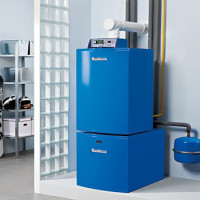 How to choose a dual-circuit floor gas boiler: what to look at before buying?
How to choose a dual-circuit floor gas boiler: what to look at before buying? 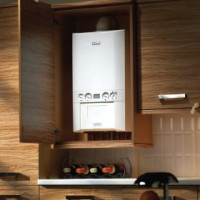 How to choose a gas wall-mounted double-circuit boiler: what to look at + what the market offers
How to choose a gas wall-mounted double-circuit boiler: what to look at + what the market offers 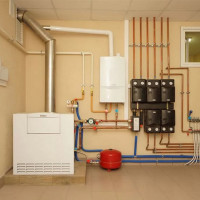 Atmospheric or turbocharged gas boiler - which is better to choose? Weighted Purchase Criteria
Atmospheric or turbocharged gas boiler - which is better to choose? Weighted Purchase Criteria 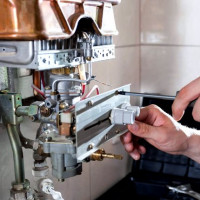 How to turn off the gas boiler for conservation: methods, detailed instructions and safety requirements
How to turn off the gas boiler for conservation: methods, detailed instructions and safety requirements  Wall or floor gas boiler - which is better? Arguments for choosing the best equipment
Wall or floor gas boiler - which is better? Arguments for choosing the best equipment  Gas boiler for liquefied gas: operating principle, types, how to choose the right + manufacturers rating
Gas boiler for liquefied gas: operating principle, types, how to choose the right + manufacturers rating  How much does it cost to connect gas to a private house: the price of organizing gas supply
How much does it cost to connect gas to a private house: the price of organizing gas supply  The best washing machines with dryer: model rating and customer tips
The best washing machines with dryer: model rating and customer tips  What is the color temperature of light and the nuances of choosing the temperature of the lamps to suit your needs
What is the color temperature of light and the nuances of choosing the temperature of the lamps to suit your needs  Replacement of a geyser in an apartment: replacement paperwork + basic norms and requirements
Replacement of a geyser in an apartment: replacement paperwork + basic norms and requirements